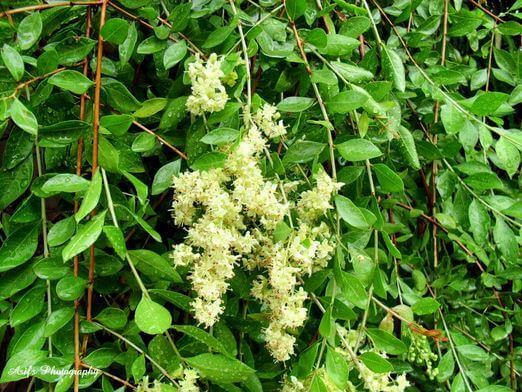Henna is used to dye cotton, silk, and other natural fibers, as well as leather and leather products. The dye is temporary. In India, henna is used for body art during festivals and celebrations including extensive use in bridal makeup in southern Asia and the Middle East. In rural areas and in traditional families, the application of henna to a bride is accompanied by dance, song, and music. Beautiful patterns of flowers, leaves, and other complex artistic patterns are drawn on the hands, feet, and other body parts by artists who use a nozzle-based instrument to apply henna paste on the body. The paste dries for a couple of hours before it is washed off, leaving reddish-orange imprints on the body. The staining is attributed to lawsone, an active ingredient that reacts with skin proteins to create a reddish-orange stain. Lawsone is released only when it interacts with an acidic solution like lemon juice or tea leaves. Fresh henna leaves, if ground to paste and applied as such, do not yield a dye.
Henna body art has acquired global popularity, and exports of henna powder to Europe and North America have increased substantially. The U.S. FDA does not ban the use of henna as a hair dye, but it has not approved its use for direct contact with skin. A 2013 study commissioned by the European Union and conducted by the Scientific Committee on Consumer Safety concluded that lawsone is safe in hair dye. The traditional use of henna as a perfume is now limited to the preparation of Indian or Middle Eastern perfume called attar, which is mixed with sandalwood.
In his work Naturalis Historia, Pliny the Elder mentions a green ointment with henna that was used to treat sores on the head and in the mouth. A compress of the henna leaves is said to be good for burns and sprains.
More recently, henna leaves have been observed to be an effective antibacterial against E. coli (Abulyazid et al., 2013). Henna leaves have shown chemo-preventive properties in studies with rats. The wound-healing property, as observed in ancient medicinal literature, was also studied in rats and appears to be validated (Babili et al., 2013; Chandra Kalyan Reddy et al., 2011; Kapadia et al., 2013). In tribal regions of eastern India in the State of Orissa, the indigenous people use henna leaves to treat liver ailments. This property was studied in rats and the findings were positive (Hossein et al., 2011).
Book link: Holy Herbs: Modern Connections to Ancient Plants
